Sewing machines: features, functions, model rating
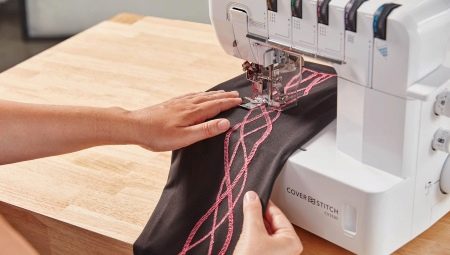
People who cannot imagine their life without sewing know well what an overlock and a cover sewing machine are. Thanks to these sewing accessories, you can not only expand your capabilities in work, but also create a better product.
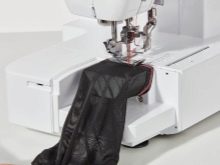
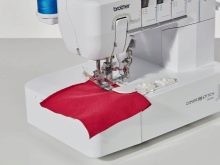
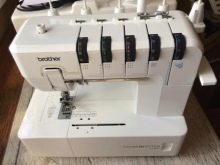
What it is?
A sewing machine is a type of sewing equipment that is used to create flat elastic stitches that can stretch in length without deforming the product. This attachment does not have a bobbin case like a conventional sewing machine, but the rest of the construction is the same.
From the spool, the thread immediately falls on the needle and looper, where it is laid out on the surface in the form of a steppe stitch.
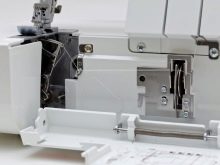


Main characteristics of the cover sewing machine:
- functioning with a different number of needles;
- making a wide, narrow, triple main seam;
- the presence of an automatic threading system;
- the sensitivity of the mechanism contributes to the selection of an individual thread tension for each type of material;
- the ability to process sections, as well as perform decorative finishing.
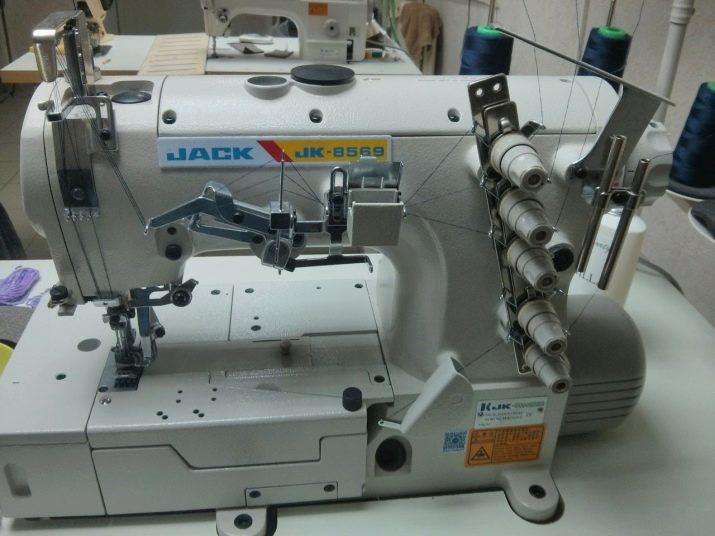
What is it for?
The classic sewing machine is unable to cope with the processing of the edges of the product, created by the weaving of threads when the rail at the bottom of the machine is functioning. These are called cover stitches. They have the ability not to break when stretched, but to stretch in length.
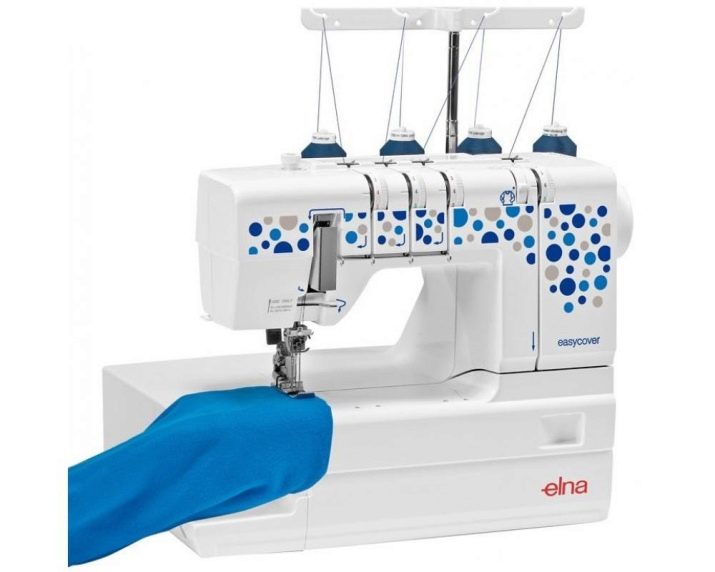
Views
According to the general classification, cover-stitch the sewing machine can be domestic or industrial, with or without top cover. The household unit is suitable for home use or small private workshop, tailor shop.Industrial cover sewing machines are used at a large manufacturing enterprise for mass sewing of clothes. Unlike the previous version, such industrial equipment has large dimensions. Also in its design there are adjusting units, thread tensioners, numerous stands and thread layers.
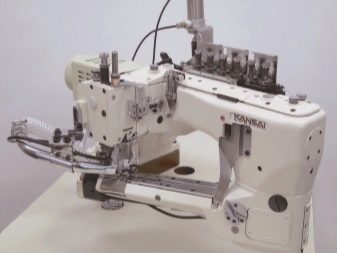
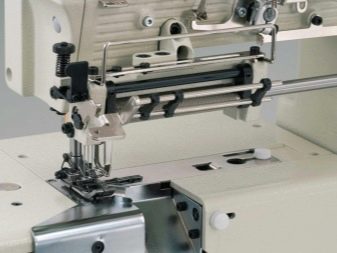
Installation of industrial sewing machines is provided on a special table, in the lower part of which there is an electric drive and a double pedal.
This equipment is used for sewing clothes, knitwear, bed linen, as well as home textiles. They are necessary to carry out sewing operations of a narrow specialization.
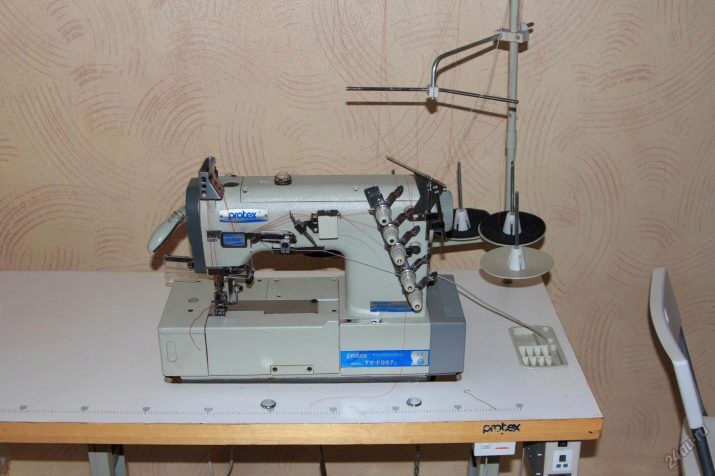
Differences from overlock
The sewing machine is capable of to grind off exclusively knitted elastic fabrics. This fact is considered the main difference between this technique and overlock. The latter are used for overcasting fabric edges, which prevents it from decaying into fibers. Coverlocks, in turn, perform the functions of sewing machines and overlocks at the same time.

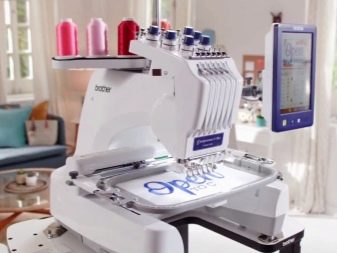
Users who are not deeply familiar with the sewing technique may not be able to distinguish between the above units, since they are almost identical in appearance. To determine the overlock, you should pay attention to the sleeve - this device has a small one. You can distinguish between a sewing machine and a carpetlock by a sticker with different stitches. In the case of the overcasting image, it can be concluded that this is a carpetlock.
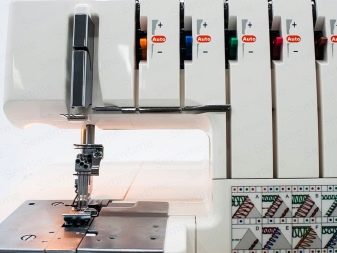

Rating of the best models
When buying a cover sewing machine, it is worth considering the speed of its operation, the possibilities, the quality of the seams. Many well-known manufacturers are ready to offer quality sewing equipment. The most popular of them are the following:
- Brother;
- Janome;
- Minerva;
- Family;
- Elna;
- Merrylock;
- Hew Home.
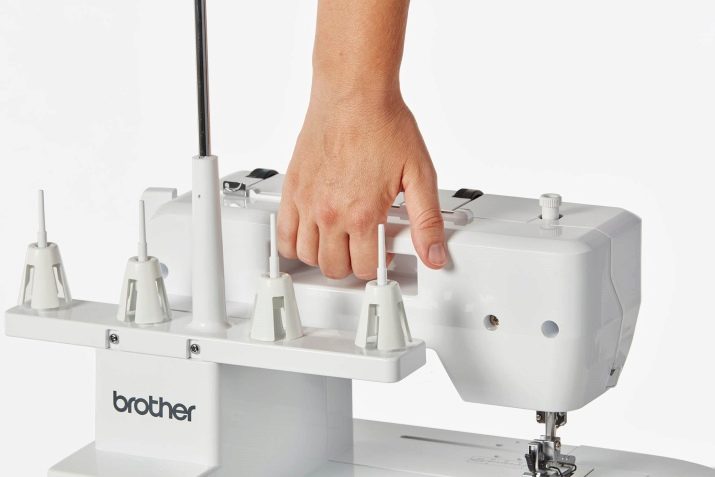
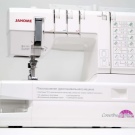
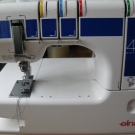
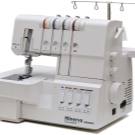

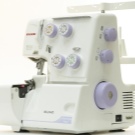
Recently, users more often buy coverstitch machines Juki MCS-1500, Elna 444, Jack, Bernina.
The following models have also proven themselves well.
- Janome Cover Pro 1000 CP... The unit weighs 8 kilograms, while it consumes 90 watts of power. The equipment is capable of performing 4 sewing operations. It works on the basis of 3 and 4 strands. The device has the ability to sew 1000 stitches in 60 seconds.
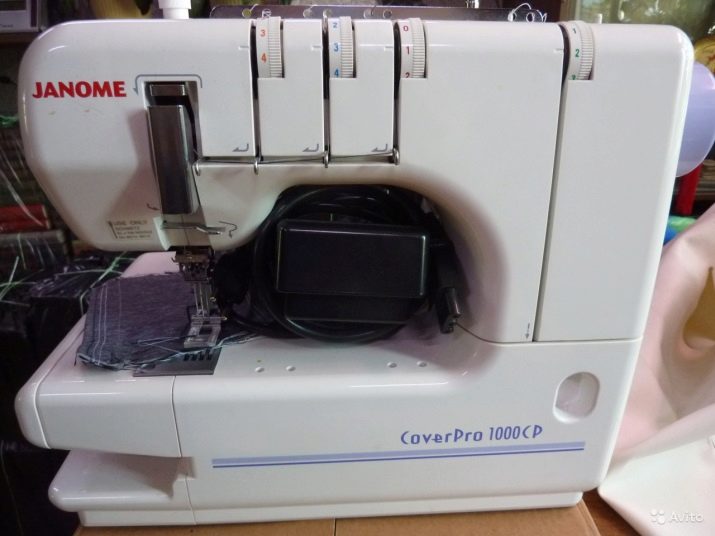
- Brother 2340 CV weighs 7 kilograms. The power consumption of the unit is 90 W. This model is capable of sewing 2-, 3- and 4-thread stitches. The machine has a removable platform and is color coded. The Brother 2340 CV does not have a filament refill.

- Minerva M2000 C. The product is made in Austria, it is capable of performing 4 sewing operations. Makes seams from 2, 3, 4 strands. Thanks to the power of 120 watts, the unit produces 1,100 stitches in 60 seconds. The advantages of this type of equipment are its productivity, and the disadvantage is the lack of refueling of needles and loopers.
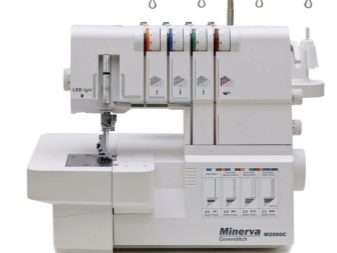
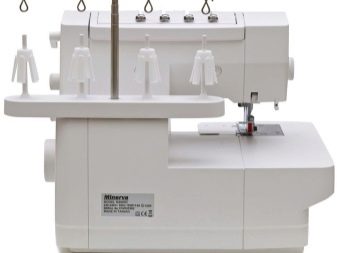
- Janome Cover Pro 1000 CP. This machine is considered ideal for beginners to sewing who do not want to invest heavily in technique. The unit appropriately combines the necessary options and the absence of electrical control. Such equipment is inexpensive, while it has the ability to perform 4 sewing operations from 3- and 4-thread seams. To increase the capabilities of the machine, additional legs are attached to it. The advantages of Janome Cover Pro 1000 CP are the ability to work with different types of material, the production of high-quality flat seams, light weight and a removable sleeve.
Among the disadvantages of the devices, a low quality of work with delicate fabrics, skipping stitches, and the use of not all types of thread were noticed.
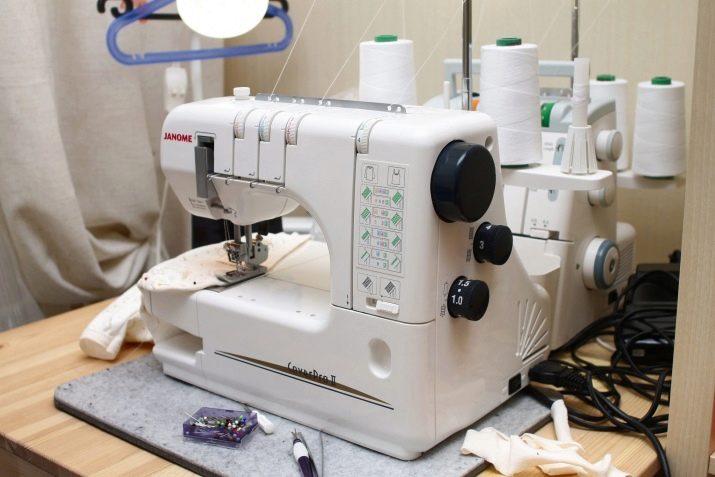
- Family MasterLock 8000. This model is capable of efficiently working with 3 and 4 strands. In 60 seconds, the unit is capable of making 1000 stitches. Thanks to the removable sleeve, the user will be able to handle cuffs and collars beautifully and comfortably. The machine is suitable for working with any kind of fabric. The advantages of this model are high build quality, the presence of a stabilizer, and the presence of color-coded threads.The disadvantages of this type of technology, users consider the high cost, the absence of a thread and looper refueling, as well as a display.
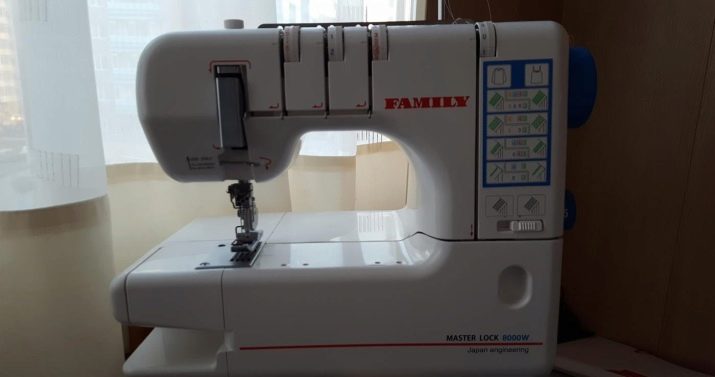
- Fujima 14 U557 - a compact model of a cover sewing machine, capable of functioning in 20 modes. Thanks to the weaving of 2-5 threads, the seam is quite strong and neat. The unit works almost silently, processes materials with different thicknesses. This expensive model comes with a waste bin.
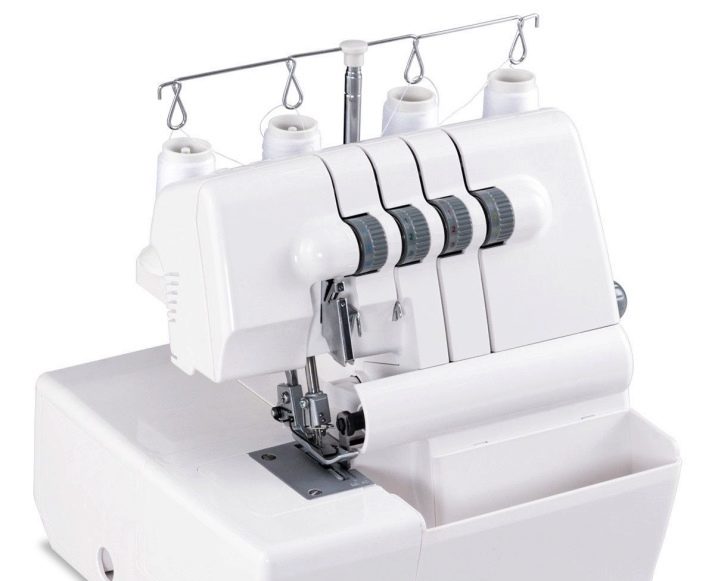
- Elna 444 - a professional model of high quality, distinguished by its reliability. The unit is capable of working with a wide variety of materials, ranging from silk to artificial leather. The technique performs 14 functions, makes the seams pretty neat. This type can be used not only by a professional dressmaker, but also by a novice seamstress. The advantages of Elna 444 include ease of threading, low operating noise, good performance and the presence of a looper refueling. The disadvantages include the need for branded threads, as well as the lack of their gas station.
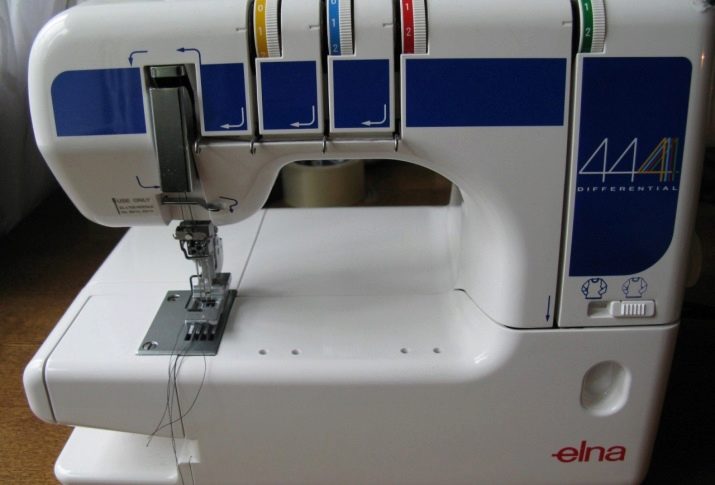
- Juki MF-7723-V10-B48 Is a device that is characterized by high performance during processing of knitwear with different thickness and texture. The technique is characterized by automatic lubrication of elements, as well as the presence of 5 threads in operation. The cost of this product is quite high.
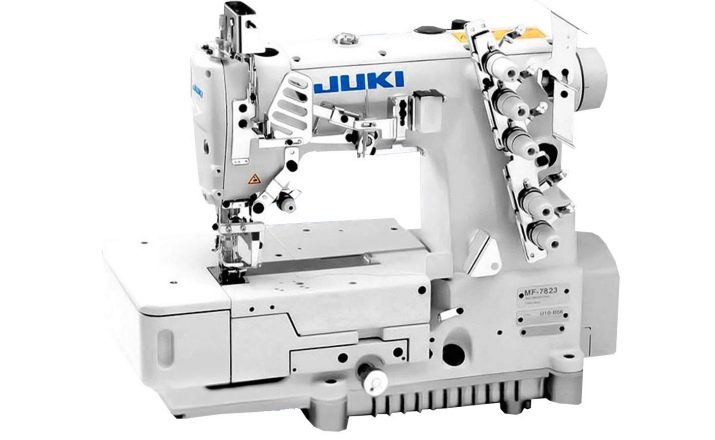
Components
Standard sewing equipment includes feet, needles, threads.
Also, along with the sewing machine, the user purchases a large and small screwdriver, a cleaning brush, tweezers, a looper, and a spool holder.
Some models suggest the presence of an anti-dust cover in the configuration.

How to choose?
Currently, cover sewing machines are considered quite popular, so many brands produce them. To make the right choice of sewing equipment for home and atelier, you should pay attention to the following factors:
- number of threads;
- number of needles;
- the possibility of automatic refueling;
- tension option;
- speed of work;
- choice of modes;
- stitch width.
Many sewing machines operate with a small number of threads, namely from 3 to 5. It is better to opt for a 4-thread technique, as it is considered universal.
Paying attention to the number of needles, it is worth remembering that this criterion is directly related to the stitch width. If the work requires the laying of extremely narrow stitches, then 2 needles will be enough. In a situation with wider seams, it is worth buying a 3-needle cover sewing machine.
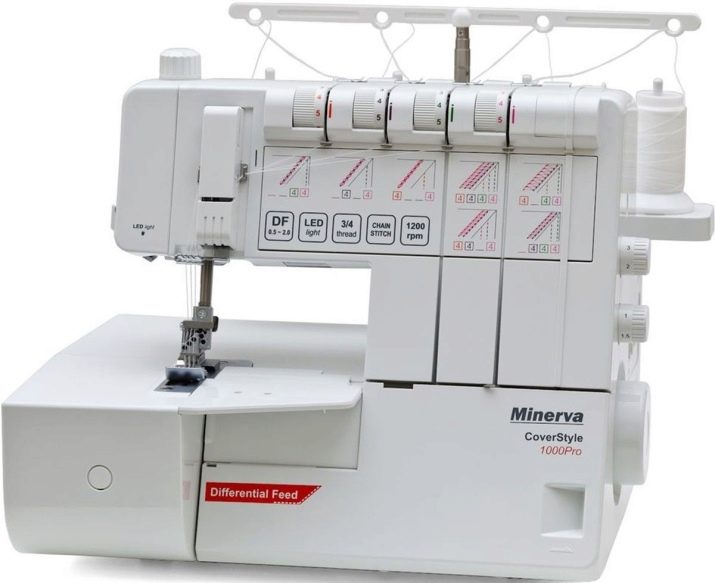
Automatic threading makes the device more expensive. If the machine is bought for personal use, then you can take a cheaper option.
For professional sewing, automatic threading is especially useful. This is due to the fact that the covering technique consumes threads at a high speed, as it puts them in steppe stitches. The threading station simplifies the sewing process, in this case the user does not have to think about the fact that the threads are running out quickly.
An important criterion when choosing a cover-up technique is the method of tension. In units of low and medium cost, this procedure will need to be carried out manually. Poor quality threads may break with automatic tension. The seamstress should also think about what operations she will perform on her machine. For home use, you should not buy equipment with wide functionality, since it is not cheap.

The best option can be considered a cover sewing machine that sews chain stitches with a width of 2.8-5.6 millimeters. On sale you can also find a unit with an increased width range of up to 6 millimeters. Such machines allow you to organically and accurately handle the clothes of an adult and a child. When buying coverstitching equipment do not ignore the noise and how smooth the working foot travels.
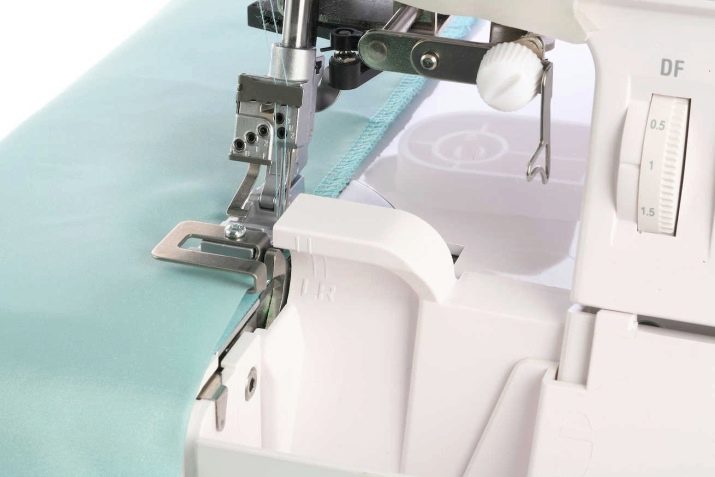
How to set up and use?
The use of a cover sewing machine seems complicated only before you get to know it in detail. First you need to thread the threads. This is done along the direction of the coils, namely from right to left.
The first thread on the right will be the lower thread, and it goes through the looper. The other 3 threads are needle threads. If the lower thread breaks, then the upper ones will need to be removed from the needles.
When the bobbin thread has been threaded, you can proceed to the upper needle thread. It is worth threading all the needles available. Then you can start using the cover sewing machine.

According to user reviews, unit breakdowns are quite rare. The main cause of malfunctions is considered to be improper operation of equipment.
The most common causes of sewing machine breakdowns include the following.
- The unit does not turn on. The reason for this situation may be a breakdown of the power supply.
- Equipment skips stitches... This malfunction can be caused by poor setting of the technique, as well as the use of unsuitable threads and needles.
- Needle breakage happensif their thickness does not correspond to the characteristics of the fabric.
- Thread breaks. Such a nuisance occurs when the upper and lower threads are too tight.
- High noise level during operation, it indicates wear of parts, the need to replace them, as well as insufficient lubrication of equipment.
- The machine does not sew well which is characterized by a heavy stroke, broken threads, skipped stitches, broken needles. If you find these problems, you should contact the specialists. Repairing broken equipment will cost much less than buying a new one.
Sewing equipment professionals do not recommend repairing or replacing parts on the sewing machine yourself, as this could make the problem worse.
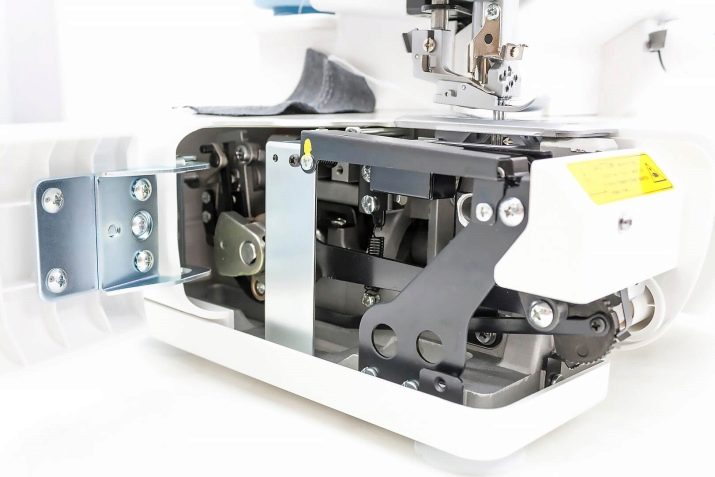
Since jersey is not an easy fabric to process, it is worth buying high-quality needles and threads to work with it, and correctly adjust the unit. The needles should be selected with long points, and the textured or polyester type is better for the thread. Subject to the above rules, you can count on high-quality processing of jersey fabrics, stretch or super stretch.
A sewing machine is essential for high-quality processing of fabrics. It can perform many functions, therefore it is in demand both in the household and in the professional sphere. A coverstitch machine can ease the efforts of a dressmaker to create a quality product with properly finished edges, saving her time and effort.
For an overview of the Janome Cover Pro 2000CPX sewing machine, see below.








